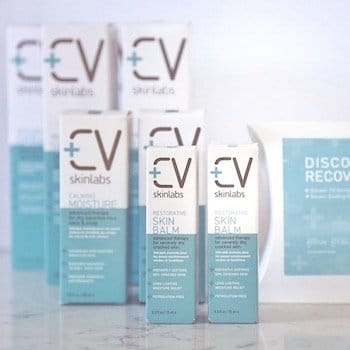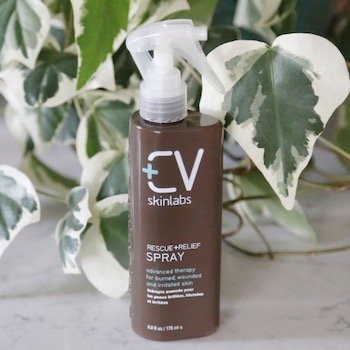
The COVID-19 pandemic has made sustainability more difficult than ever.
Scientists reported in 2020 that the quantity of waste increased across countries observing social distancing and stay-at-home measures, with the need for single-use products and panic buying increasing production and consumption.
 Packaged take-out meals and home-delivered groceries have contributed more to plastic waste during lockdowns, with the global plastic packaging market size projected to grow from $909.2 billion in 2019 to $1012.6 billion by 2021, at a compound annual growth rate of 5.5 percent, mainly due to the pandemic response.
Packaged take-out meals and home-delivered groceries have contributed more to plastic waste during lockdowns, with the global plastic packaging market size projected to grow from $909.2 billion in 2019 to $1012.6 billion by 2021, at a compound annual growth rate of 5.5 percent, mainly due to the pandemic response.
Tania Ragland Castaneda of Republic Services, one of the largest solid waste collection and processing services in the nation, told ABC News that in a typical household, people generated around four pounds of waste per person per day before the pandemic, but during the pandemic that increased to 25-35 percent.
The crisis put extra pressure on waste management practices too, leading to improper disposal methods that created waste on beaches and in waterways.
We know that a lot of our CV Skinlabs customers are concerned about what’s happening. To help empower you to make change where you are, we have 12 tips for how you can practice sustainability now. Bit by bit, we can all do our part to help reverse this trend.
Twelve Ways to Practice Sustainability and Stay Healthy Too
1. Buy a Reusable Mask to Encourage Sustainability
You may already be wearing a mask that you can wash and wear again and again, but if not, this is one thing you can do to cut down on waste. Unless you’re a healthcare worker needing an N95 or other type of disposable mask, you can use a fabric option and still be protected. If you want another layer of protection, buy a filter to go inside.
2. Use Sustainable Cloth Rags Rather Than Paper Towels
When we’re concerned about germs and safety, it’s tempting to use throw-away paper towels to clean. You can get surfaces just as clean, however, with a cloth rag, as long as that cloth rag has been laundered. Get several of them, and then launder them after each use and you can be just as effective against germs without creating more waste.
3. Refill Your Hand Sanitizer Container
All those plastic containers filled with hand sanitizer will end up as plastic waste. Instead, buy a couple of smaller containers, then refill these with a larger one to cut back on waste.
4. Increase Sustainability by Declining the Extras When Ordering Takeout
If you’re ordering takeout, ask them to hold the napkins and plastic utensils unless you need them on the go. If you’re taking the food home, you don’t need them, and you can cut back on the waste that way.
5. Use Sustainable, Reusable Grocery Bags
Many of us were already doing this before the pandemic but then got out of the habit because of contamination fears. It is wise to wash your bags if you can and to always place meat in its own bag. If the store doesn’t want to fill your reusable bag, ask them to simply place the items (bagless) back into the cart, and you can bag them in your reusable bags when you get to your car.
6. To Increase Sustainability, Buy Less!
Many of us had to spend endless hours at home during the pandemic, and let’s face it: we got bored. Some turned to online shopping just to bring a little joy into their lives. It’s understandable, but the more we buy, the more waste we create. Make do without new purchases when you can, or buy secondhand to increase sustainability.
7. Start a Garden for Home Sustainability
We talked about planting native species in a previous post. (Check it out here.) This is a great way to contribute to biodiversity in your area. If you live in a dorm, apartment, or another area without outdoor gardening space, try starting an herb garden on the windowsill to get some green into your living space. Bring in houseplants for additional air-cleaning benefits.
8. Boost Sustainability by Buying Local
Buying local products helps reduce the impact of shipping and storing while supporting your local farmers and producers. Head out to your local farmers’ markets and local shops, as these were all hit hard during the pandemic.
9. Recycle Your Electronics Whenever Possible
All of us are using our electronics and their power sources more frequently, which means more electronic waste. Once your device is worn out or when you’re ready to replace it, recycle it. Many major electronic retailers, cellphone providers, and municipalities will take old smartphones, laptops, and tablets.
10. Buy in Bulk When You Can to Increase Sustainability
The more you can buy in bulk, the better, as it reduces wasteful packaging and also helps you minimize your grocery store visits, saving on gas.
11. Research and Support Brands That Care About Sustainability
This can apply to all kinds of products, including cosmetics, clothing, household products, and more. Which companies care about sustainability? Which are taking action to cut back on excess packaging and plastic waste? At CV Skinlabs, we put our product information inside our product containers to help save resources, and we also use recyclable plastics.
 12. Make Your Beauty Routine More Sustainable
12. Make Your Beauty Routine More Sustainable
Yes, you can green up your beauty routine too! We suggest these tips:
- Recycle products you use in the bathroom. We often forget these, but your shampoo and conditioner bottles, for instance, may be recyclable. Get yourself a bin for recyclables that you can use in the bathroom and put your recyclable items into it. Keep in mind that some stores are offering incentives for you to return your empty packaging.
- Skip one-use makeup remover cloths. These create a lot of waste and aren’t necessary. Use a clean cloth and your favorite makeup remover solution instead. Consider using reusable cotton pads too.
- Seek out refillable containers. Many brands are making refillable containers now, such as those for eyeshadow, that you can fill yourself and use again and again.
- Simplify your routine. Try to cut down on the number of products you use every day. Choose multitasking products like our Rescue + Relief Spray, which works as an anti-redness, cooling spray, a skin toner, and an aftershave.
- Don’t leave the water running. When washing your face or during any other part of your beauty routine, turn the faucet off as often as you can.
- Stock up on eco-friendly beauty tools. There are many options out there today for sustainable beauty tools like foundation brushes, makeup blenders, and more. You can also find makeup brushes made from recycled materials.
How do you promote sustainability during these tough times?

